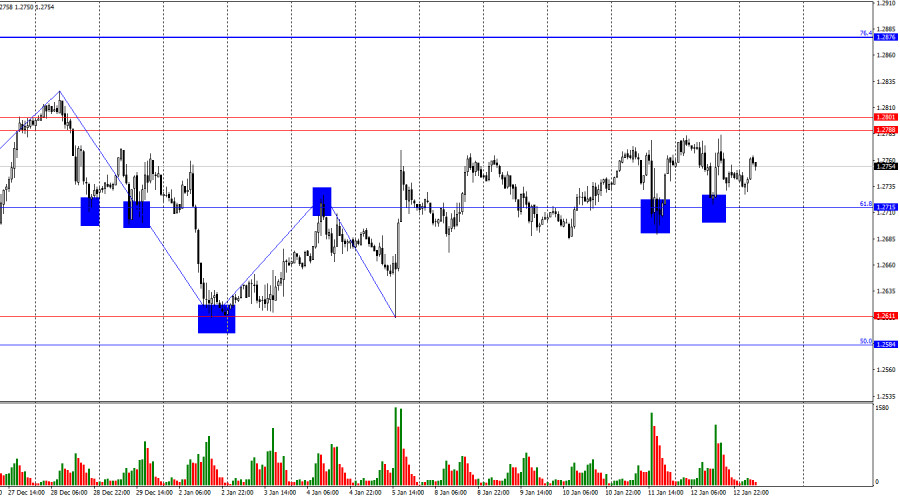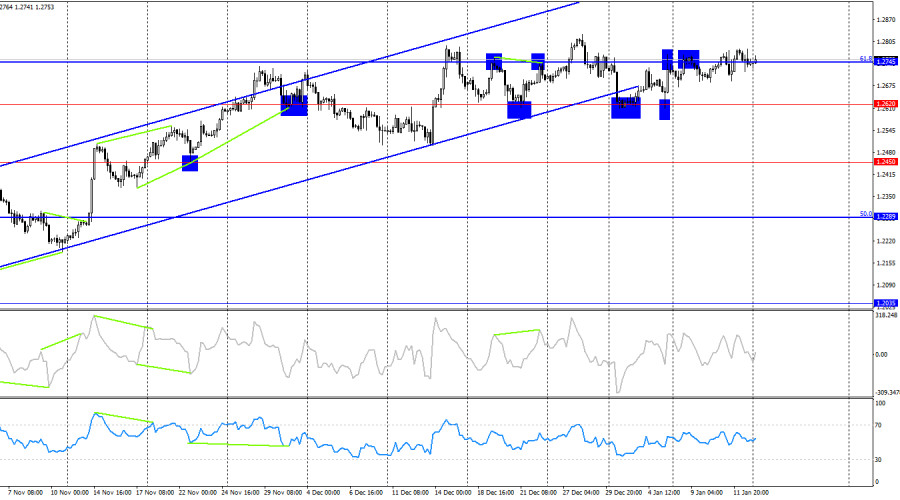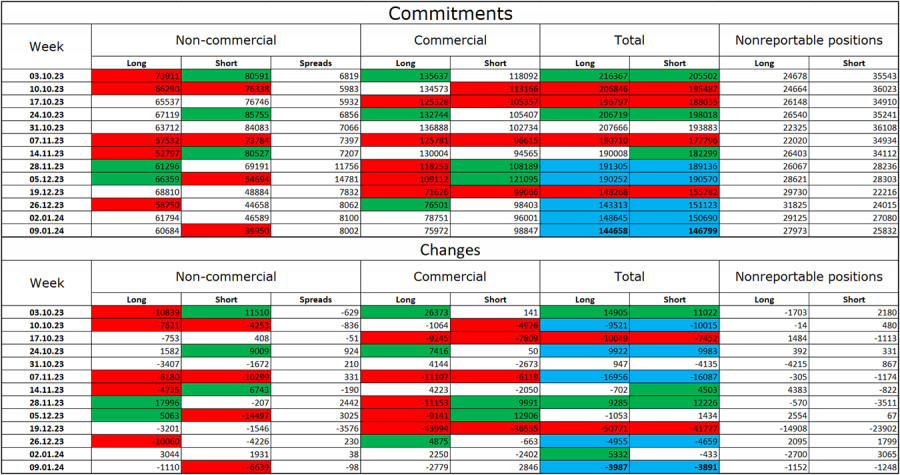
On the hourly chart, the GBP/USD pair experienced a decline on Friday to the corrective level of 61.8% (1.2715), bounced from it, reversed in favor of the British pound, and resumed its upward movement towards the resistance zone of 1.2788–1.2801. A rebound from this zone could again favor the US dollar and lead to a minor decline towards 1.2715. The sideways movement persists between the levels of 1.2611 and 1.2801. Consolidation above the zone of 1.2788–1.2801 increases the probability of the British pound's continued growth towards the corrective level of 76.4% (1.2876).

The wave situation remains highly ambiguous. Current trends are short-term, often featuring single waves representing a full trend. The "bullish" sentiment remains due to the absence of a decline in the British pound, but the waves do not provide a clear understanding of what is happening in the market. The last downward wave failed to break the 1.2611 level, around which the lows of all previous waves are located. The new upward wave broke the peak of the previous one; however, several smaller waves are visible inside it, making it very difficult to interpret the current picture. The current movement exhibits all the characteristics of a horizontal one, and I do not see a clear course for the British pound above 1.2801.
The information background on Friday could have been stronger. Reports on GDP and industrial production initially looked promising, but in practice, they only caused a slight reaction from the bears. The same applies to the US Producer Price Index (PPI), which only slightly helped bullish traders. The British economy grew slightly stronger in November than traders expected, but this report had no significant impact. The British pound continues to trade sideways, and I see no reason to exit this range.

On the 4-hour chart, the pair made several returns to the Fibonacci level of 61.8% (1.2745). A new rebound from this level would again favor the US dollar, leading to a decline towards the level of 1.2620. The horizontal movement between the levels of 1.2620 and 1.2745 is visible on the 4-hour chart. No imminent divergences are observed in any of the indicators today, and the ascending trend corridor has been exited. The trend may continue to shift towards the "bearish" side, but it will take time and require significant efforts from the bears.
Commitments of Traders (COT) Report:

The sentiment of the "Non-commercial" traders category shifted in favor of the bulls during the last reporting week. The number of long contracts held by speculators decreased by 1110 units, while the number of short contracts decreased by 6639. The overall sentiment of large players shifted towards "bearish" a few months ago, but now, the bulls have a slight advantage. There is a gap between the number of long and short contracts: 60 thousand versus 39 thousand, but the gap is small and practically not increasing.
The British pound still has excellent prospects for a decline. Over time, the bulls will continue to unwind their buy positions, as all possible factors for buying the British pound have already been worked out. The growth we've seen in the last three months is corrective. For over a month now, the bulls have been unable to push past the 1.2745 level.
Economic Calendar for the US and the UK:
On Monday, the economic events calendar contains a few interesting entries. The impact of the information background on the market sentiment will be absent today.
Forecast for GBP/USD and Trader's Advice:
Sales of the British pound are possible today near the zone of 1.2788–1.2801 on the hourly chart with a target of 1.2715. Holding onto sales can be considered if the price closes below 1.2715 with a target of 1.2611. Buy positions of the British pound were possible on Friday after the rebound from the level of 1.2715 with a target of 1.2788. These trades can still be kept open.